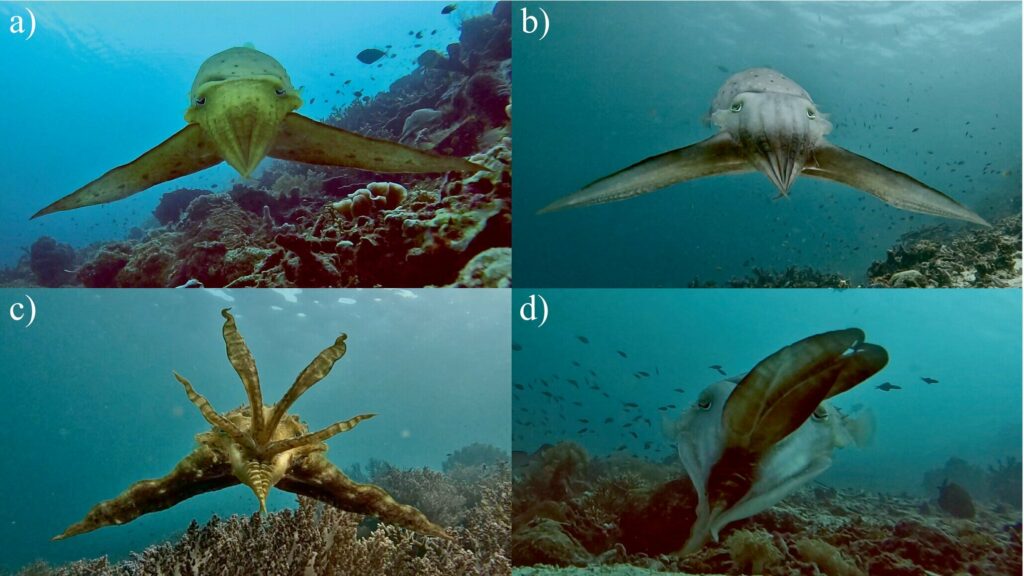Adaptive Camouflage in Broadclub Cuttlefish: A Study of Hunting Strategies
Introduction to Cuttlefish Behavior
A research team comprising marine biologists from the University of Bristol in the United Kingdom, along with a collaborator from Indonesia’s Regional Research and Innovation Agency, has unveiled remarkable findings about the wild broadclub cuttlefish (Sepia latimanus). This study highlights how these fascinating creatures modify their body shape and coloration depending on their surroundings to effectively conceal themselves from prey.
The Research Expedition
The researchers undertook an extensive field study off the coast of New Guinea, focusing specifically on West Papua, a province known for its rich marine biodiversity. This region is home to significant populations of cuttlefish that provide an ideal setting for investigating their camouflage tactics. Over several months, the team recorded footage of 98 individual cuttlefish while they engaged in huntingCrustaceans such as crabs and shrimp.
Key Findings on Camouflage Displays
Published in Ecology, this groundbreaking research outlines four primary camouflage strategies employed by broadclub cuttlefish during predation:
- Leaf Display
The first strategy observed was termed “the leaf.” In this display, cuttlefish would adjust their skin pigmentation to mimic that of foliage while flattening their bodies against surfaces. This clever ruse enhanced their stealth as they approached unsuspecting prey.
- Passing Stripe
The second technique identified was named “passing stripe.” In this mode, the cuttlefish turned dark gray except for a distinctive black stripe that moved along its back. It was noted that this dynamic movement contributed significantly to obscuring the rest of its form against varying backgrounds.
- Branching Coral Mimicry
In what was called “branching coral,” these mollusks elevated and spread out their arms akin to coral formations while altering body color patterns accordingly. This adaptation allowed them to blend into rocky or coral-rich environments seamlessly.
- Pulse Display
researchers documented what they referred to as ”the pulse.” During this display, cuttlefish extended their arms forward with lively pulses of dark coloration moving across their bodies—although further investigation is needed regarding how this approach aids in hunting success; it occurred at frequencies similar to other displays.
Conclusion
This insightful study illuminates not only how broadclub cuttlefish utilize advanced color-changing abilities for defense but also expands our understanding of such adaptations when stalking prey. As environmental pressures increase due to climate change and human impact on marine ecosystems, knowledge on species like these will be critical for conservation efforts moving forward.
Further Reading
For more information about adaptive behaviors among cephalopods and related studies:
How et al., (2025), Multiple Hunting Displays in Wild Broadclub Cuttlefish, Ecology DOI: 10.1002/ecy.70021
© 2025 Science X Network
